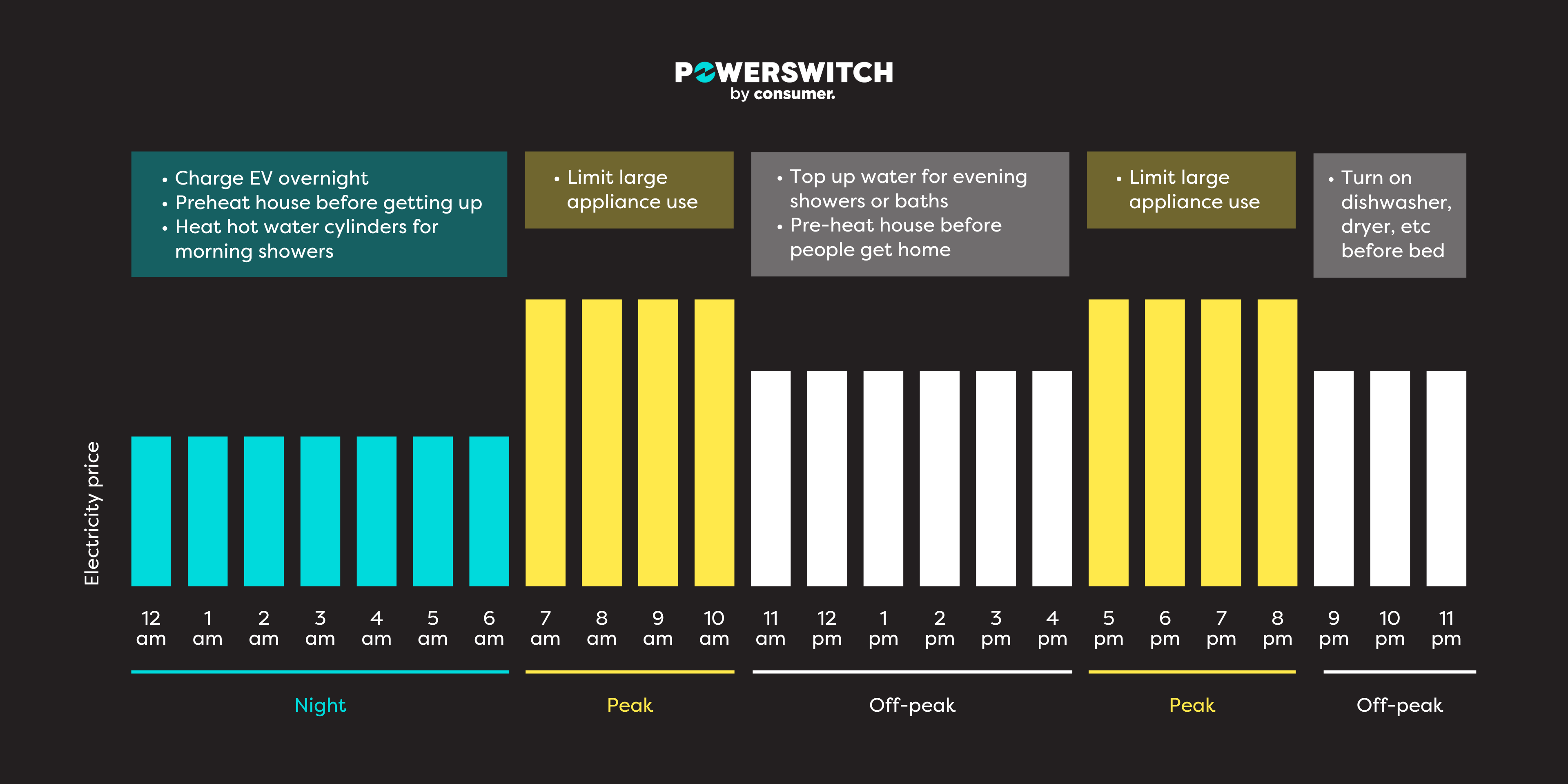How to get cheaper power bills with a time-of-use plan
If you have a flat-rate power plan, the price you pay for power doesn’t change throughout the day.
With a time-of-use power plan, what you pay for power changes throughout the day and you pay less at certain times. With some time-of-use plans you can even get free periods of power.
Consumers who make the most of their time-of-use plans – by being careful about when they use power – can typically save about 20% on their power bills. But beware! If you don’t end up structuring your power use to take advantage of the cheaper or free periods, you may end up paying more on a time-of-use plan than you would on a flat-rate plan.
When are the most expensive and the cheapest periods?
Since electricity isn’t easy to store, it typically needs to be generated right when we need it. During peak times – like on weekday mornings when everyone’s getting ready for the day – it’s harder for the electricity system to keep up with demand. That means the system has to rely on increasingly more expensive ways to generate electricity, so prices go up.
On the flip side, during off-peak times – like overnight or on weekends – it’s easier and cheaper to generate enough electricity to meet the lower demand, so prices drop. Electricity retailers can buy electricity in bulk during these off-peak times at lower rates. Then they can pass those savings on to you via time-of-use plans.
Time-of-use plans typically have three price periods.

Peak (most expensive)
Prices are highest at the times of the day when demand for electricity is highest. These are typically:
- 7am to 10am
- 5pm to 9pm.

Off-peak or shoulder (prices are in the middle).
These are the periods following peak periods when demand starts dropping off. Typically, they’re:
- 10am to 5pm
- 9pm to 11pm.

Night (cheapest).
Prices are lowest when demand is lowest. Typically:
-
11pm to 7am
Will a time-of-use plan save me money?
Time-of-use plans are most beneficial for households that can shift their electricity use to off-peak times and are motivated to keep it up.
If your household uses a lot of electricity – for things like a spa pool, swimming pool or electric hot-water cylinder – and you’re able to run these during off-peak hours, you could see significant savings.
Time-of-use plans are particularly suitable for electric vehicle owners who can charge their cars overnight when electricity rates are lowest. In fact, about 70% of EV owners already do this to save money.
However, if you’re not able to change your electricity habits much – such as households with young kids who need to use power at all hours, or those who use gas for heating – time-of-use plans might not be as beneficial for you.
How can I find a time-of-use plan?
We’ve made it easy. Powerswitch has a filter on its results page that allows you to see the time-of-use plans available at your location.

How can you save the most with time-of-use plans?
How much you save with time-of-use plans really depends on how much you can shift your electricity use to the cheaper times of the day or the weekend. The more you can do that, the more you’ll save!
Here are some easy ways to save with time-of-use plans.
Charge your EV overnight or on weekends.
Get in the habit of loading your dishwasher, dryer and washing machine, and hitting the delay button for the start of the cycle or waiting until before you go to bed to turn them on.
Consider using timers on hot-water cylinders, spa pools and swimming pools, so they run during cheaper times.
Every little shift can add up to big savings!

Are time-of-use plans better for the environment?
Yes! During peak times, the electricity system can’t meet demand using solely renewable energy sources, such as wind, hydro or geothermal, so we end up using more fossil fuels like gas and coal to fill the gap.
If we could move some of our national energy use to off-peak hours, we could rely more on renewables. Shifting your usage can help make the grid that bit greener!
Over at Consumer NZ, we’ve looked at how some people have changed their habits to save money on a time-of-use plan.

With the market always changing, it pays to check often for the best deals. We compare thousands of electricity and gas plans for free. Do a quick check to see how much you could be saving.